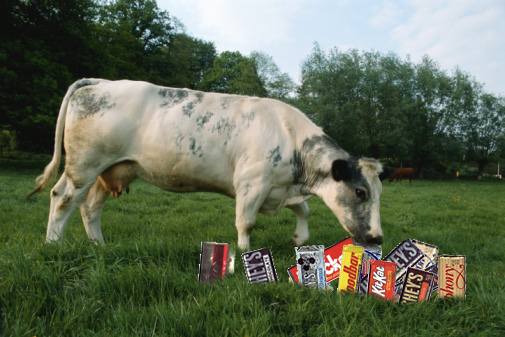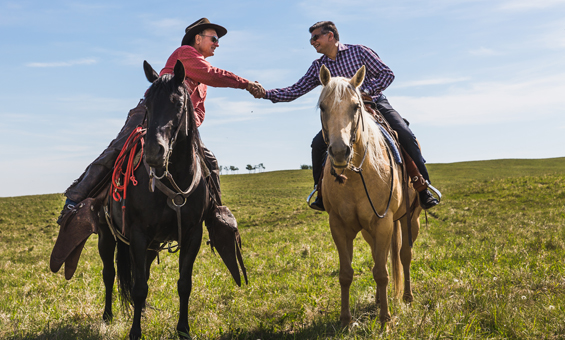Editors Note: Jess Jackson says that it seems he’s been learning to communicate almost all his life. “Just expressing my thoughts in a way that other people can understand is like pushing marshmallows into a parking meter,” he says. But when he paints mental pictures he’s found communication becomes easier. He’ll be sharing some of the pictures he’s painted with On Pasture readers over the next little while to help us all think about things in a new way.
Although cows and small ruminants can self-medicate, eat weeds and do wonderful things for us, they are self-centered and stubborn and benefit greatly from grazing management. Think of it this way:

I raised four children and if we let them loose on a buffet line without restraint or good parenting, the dessert would be gone first, meat next, then maybe a few vegies or fruit. But most of the salad and vegetables would get moldy before they were eaten. The best thing for kids is to give them a plate of food containing a balanced meal, then let them go back when it is empty.
Livestock are no different than kids. They eat the dessert plants first, then the next best and so on, continually grazing the same plants until those plants die. Scientists call this pushing back succession. The best solution is to split grazing lands into the smallest paddocks that the manager can handle which contain generally equal amounts of forage on “the plate”. Then move the livestock so that ALL the plants are eaten. The dessert plants get enough rest to regrow, reproduce and be ready for the next grazing event. The salad plants may not taste as good but many are nutritious. Besides, salad isn’t bad for me, I just like to wipe the taste from my mouth with a ribeye.
A second-order effect is that if forages like fescue are left to be grazed last, then the toxicity is 100% of the diet. If livestock were encouraged to graze every plant, including fescue, in a short time frame, the toxicity would be a smaller percentage of the diet. Even the trampling of stems and other “yucky” things helps build soil health and allow all plants the chance to compete evenly. Your local NRCS Range or Grazing Specialist can help show producers what the plate size should be.




